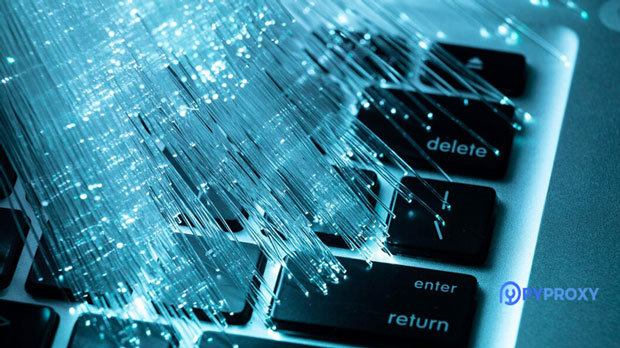When it comes to choosing between free residential proxies and the best residential proxy providers, there are several important distinctions that can significantly impact your experience and results. Free residential proxies might seem like an attractive option due to their zero-cost appeal, but they often come with a range of limitations. On the other hand, top residential proxy providers deliver a premium service, ensuring higher performance, security, and reliability. In this article, we will explore these differences in detail, covering everything from speed and security to pricing models and customer support. By the end, you will have a better understanding of what to expect from each type and which one is right for your needs. What Are Residential Proxies?Before diving into the differences, it's important to first understand what residential proxies are. A residential proxy is an intermediary server that uses IP addresses assigned to real residential devices, such as home computers, smartphones, or IoT devices. This makes them appear as legitimate users to websites, helping to avoid blocks, CAPTCHAs, or other types of restrictions typically imposed on non-residential (datacenter) proxies.Residential proxies are favored for tasks such as web scraping, browsing anonymously, managing social media accounts, or bypassing geographical restrictions on content. However, the type of proxy you choose—whether free or from a premium provider—can drastically affect the quality of service you receive.Free Residential Proxies: Pros and ConsPros of Free Residential ProxiesFree residential proxies may seem like a great option for those on a budget. Here are some potential benefits:- Zero Cost: The most obvious benefit is that they come at no charge, making them accessible to individuals or businesses with limited budgets.- Ease of Access: Free proxies are often easy to find, and some even provide instant access without the need for any long-term commitments.- Anonymity: Like all residential proxies, free versions also offer a level of anonymity, hiding the user's real IP and location.Cons of Free Residential ProxiesWhile free residential proxies may seem appealing, they come with several significant drawbacks:- Low Speed and Reliability: Free proxies are often slower and less reliable compared to paid alternatives. The servers may be shared by many users, leading to bandwidth congestion and poor performance.- Limited Access: Free residential proxies usually have a limited number of available IPs, which can make them less effective for large-scale tasks like web scraping or running multiple accounts.- Security Risks: Since free proxies are not professionally managed, there may be a higher risk of data theft, malware, or phishing attacks. Additionally, free proxies are often not encrypted, which leaves users vulnerable to man-in-the-middle attacks.- Lack of Customer Support: Free proxy providers typically do not offer any dedicated support channels, which means you may be left to troubleshoot problems on your own if something goes wrong.The Best Residential Proxy Providers: Advantages and Key FeaturesWhat Makes a Residential Proxy Provider the "Best"?A top-tier residential proxy provider offers more than just access to residential IPs. They provide a comprehensive, secure, and high-performance service. Here’s what distinguishes the best residential proxy providers:- Fast Speeds and High Reliability: Paid residential proxies are optimized for speed, ensuring a smooth experience even when performing data-heavy tasks. Providers invest in infrastructure that guarantees minimal downtime and high uptime, making them ideal for time-sensitive tasks like web scraping.- Scalability: Premium services offer access to a wide range of IP addresses across different geographic locations, providing the scalability needed for larger projects. This makes them suitable for businesses that need thousands or even millions of IPs.- Enhanced Security and Encryption: Top providers ensure that your data is protected by strong encryption, reducing the risk of hackers intercepting your information. The use of secure proxies also protects you from malware and other cyber threats.- Better Support and SLA (Service Level Agreement): Premium services come with dedicated customer support, often available 24/7. This is crucial when issues arise, as fast and professional support can minimize disruptions.- Ethical Practices and Transparency: Leading proxy providers ensure that the residential IPs they use are legally obtained and that they comply with all privacy laws and regulations.Disadvantages of the Best Residential Proxy ProvidersWhile the best providers come with a wide array of advantages, there are some potential downsides:- Cost: The primary disadvantage of premium residential proxies is the price. The quality service comes at a higher cost, which may be prohibitive for smaller businesses or individuals with limited budgets.- Complexity: Some premium services can be complex to set up, especially if you are new to proxies or do not have technical experience. However, this is typically mitigated by the support offered by top-tier providers.Comparing Free Residential Proxies vs Premium ProvidersSpeed and PerformanceFree residential proxies tend to suffer from lower speeds and inconsistent performance due to their shared nature. Many users connect to the same proxy pool, resulting in slow connection speeds and potential service interruptions. On the other hand, the best residential proxy providers offer a reliable and fast connection with minimal lag, even when handling high volumes of requests.Security and AnonymityFree proxies often come with significant security risks. Since they are not professionally managed, you are more vulnerable to cyberattacks, data theft, or other malicious activities. Premium providers, however, prioritize the security of their users by offering encryption and protecting their networks with advanced security measures.Reliability and Customer SupportFree residential proxies rarely offer any support, and any issues you encounter are often left unsolved. Conversely, the best residential proxy providers offer 24/7 customer support with dedicated service teams ready to assist with technical problems or troubleshoot any issues, ensuring minimal downtime.PricingFree residential proxies are, of course, free, but this comes with many limitations in terms of performance, security, and scalability. Premium providers charge based on usage, offering flexible pricing plans, which might be more expensive but are well worth the investment if you need high-quality, reliable proxies for important business operations.Conclusion: Which Should You Choose?The choice between free residential proxies and the best residential proxy providers ultimately depends on your needs. If you’re just testing the waters or have small-scale tasks, free proxies might be sufficient. However, if you're running a business or need to execute larger, more critical projects, investing in a premium residential proxy provider is advisable. Not only will you enjoy better speeds, reliability, and security, but the support and infrastructure offered by premium providers can significantly improve the success and efficiency of your tasks.In the end, while free proxies offer a no-cost solution, the trade-off is significant in terms of quality. If performance, security, and scalability are essential for your projects, the best residential proxy providers are the clear winner.
Oct 17, 2025


































































